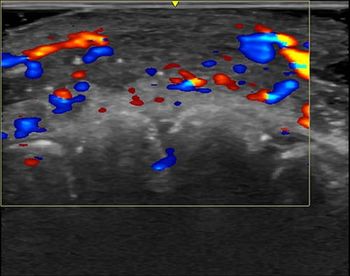
Pre-Operative Breast MRI Diagnoses More Cancers in Women with DCIS
Incorporating this imaging catches 11 percent more cancers, potentially affecting surgery plans and outcomes.
Women who have ductal carcinoma in situ (DCIS) can benefit from undergoing pre-operative breast MRI, new research has revealed. These scans pinpoint 11 percent more cancers, indicating the images could augment surgical planning and lead to better outcomes.
In a study published recently in the
“Pre-operative identification of invasive disease and delineation of disease extent in patients with DCIS is necessary to inform surgical decision-making,” wrote the team led by Leslie Lamb, M.D., radiology instructor at Massachusetts General Hospital. “For example, if invasive cancer is identified prior to surgery rather than during the initial surgery, then sentinel lymph node biopsy can be performed at the initial surgery.”
DCIS is typically first identified via mammography, and it accounts for roughly 20 percent of all breast cancers. But, because breast MRI has higher sensitivity than mammography and can find both calcified and non-calcified DCIS better, it is increasingly being used as a pre-operative tool with women who have invasive breast cancer.
However, using preoperative breast MRI is still a subject up for debate, Lamb’s team said. Alongside finding more cancers, it may also contribute to false-positive care need biopsies, overestimate the extent of disease compared to mammography, and prompt more mastectomies without lower re-excision rates.
Related Content:
Consequently, to determine whether pre-operative breast MRI has positive effects on surgical planning and outcomes, Lamb’s team conducted a study with 963 women who had mammography-identified calcifications that were determined to be DCIS by core biopsy between 2007 and 2016. Of the group, 236 women (24.5 percent) also received breast MRI. These women shared three characteristics: they were younger; they were less likely to have a previous breast cancer; and they were more likely to have dense breast tissue.
Based on their analysis of women undergoing breast MRI, the team determined 66 women (28 percent) had 80 findings for which further work-up or biopsy was suggested. An additional 21 (8 percent) had 23 findings that did not receive follow-up, and 45 women (19) percent) had 57 findings that prompted biopsy alone. Among the women who had biopsies, 37.6 percent were benign, 17.5 percent indicated high-risk pathology, and 43.9 percent were malignant.
Related Content:
According to Lamb’s team, pre-operative MRI identified 26 cancers in 24 women – an additional cancer identification rate of 11.2 percent. Half were found to be invasive; half were DCIS. And, in reference to the concern over pre-operative MRI and mastectomies, the investigators discovered more women in the breast MRI group did have a mastectomy at initial surgery. However, they cautioned that rate could be due to more than just MRI results – there were other differences in the patient populations, as well, including patient age, breast density, personal breast cancer history, at ordering physician assessment.
Ultimately, in light of these results and a re-excision rate similar to women who did not undergo breast MRI, the team determined that pre-operative breast MRI should be arrow in the quiver for imaging and treatment women who receive a DCIS diagnosis.
“Ideally, pre-operative imaging with MRI, combined with other advanced diagnostic tools, can inform surgical decision-making and the overall treatment plan, in order to attain improved therapeutic precision,” the team concluded.
Newsletter
Stay at the forefront of radiology with the Diagnostic Imaging newsletter, delivering the latest news, clinical insights, and imaging advancements for today’s radiologists.




























